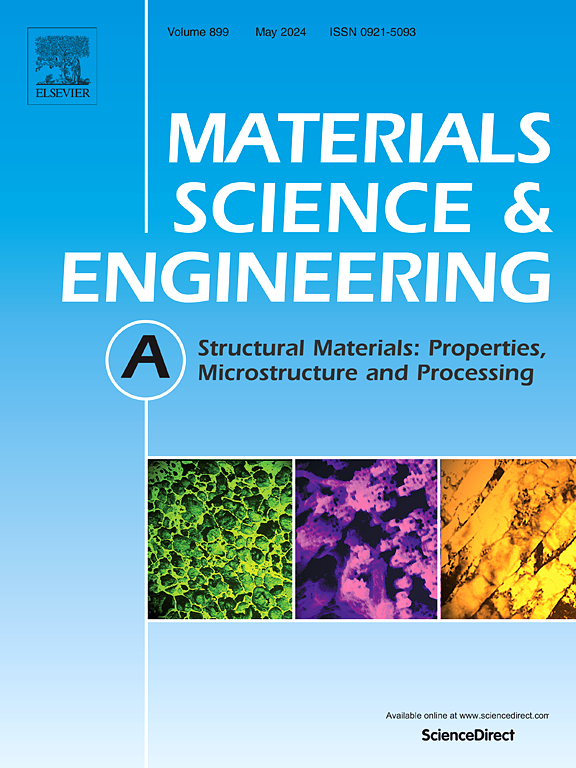Prediction of the tensile properties of A356 casted alloy based on the pore structure using machine learning
IF 6.1
2区 材料科学
Q1 MATERIALS SCIENCE, MULTIDISCIPLINARY
引用次数: 0
Abstract
Computed tomography (CT) is increasingly used to investigate porosity, which significantly affects the mechanical properties of castings. The aim of this study was to explore the relationship between the tensile properties – yield strength (YS), ultimate tensile strength (UTS) and elongation – and the pore structure of A356 castings produced under industrial conditions with low-pressure die casting (LPDC) technology. The novelty of our method lies in determining relationships not only with bivariate analyses but also by applying regression modeling using machine learning (ML). CT images of the test specimens were generated, and the pores in both two and three dimensions were quantitatively characterized. After the tensile tests, the fracture surfaces were numerically characterized using scanning electron microscope (PFIB-SEM) images. Prior to regression modeling, an exploratory data analysis (EDA) was conducted. Based on the tests, it was concluded that the findings for tensile strength are partially consistent with the literature, while those for yield strength are entirely consistent. Furthermore, it was newly observed that fracture surface porosity (AA, Projf-sf) is influenced by the projected area of the largest volume pore in the fracture segment (AProj, Vmaxf-sm), the maximum porosity of the fracture segment cross-sections (AAf-cs), and the overall porosity of the fracture segment (VVf-sm). Another new finding is that total elongation at rupture is significantly affected not only by the fracture surface porosity (AA, Projf-sf) but also by the parameter (CSC) introduced in this study, which characterizes the pore location on the fracture cross-section. The regression modeling performed this way successfully complemented the results obtained with bivariate analyses. The presented method is suitable for characterizing the relationship between the pore structure and mechanical properties of castings produced in industry.
基于孔隙结构的A356铸造合金拉伸性能机器学习预测
计算机断层扫描(CT)越来越多地用于研究孔隙率,这对铸件的力学性能有重要影响。本研究的目的是探讨在工业条件下用低压压铸(LPDC)技术生产的A356铸件的抗拉性能-屈服强度(YS),极限抗拉强度(UTS)和伸长率-与孔隙结构之间的关系。我们方法的新颖之处在于不仅通过双变量分析确定关系,而且通过使用机器学习(ML)应用回归建模来确定关系。生成试件的CT图像,定量表征二维和三维孔隙。拉伸试验结束后,利用扫描电镜(PFIB-SEM)图像对断口进行了数值表征。在回归建模之前,进行探索性数据分析(EDA)。试验结果表明,抗拉强度与文献部分一致,屈服强度与文献完全一致。此外,新发现裂缝表面孔隙度(AA, Projf-sf)受裂缝段最大体积孔隙投影面积(AProj, Vmaxf-sm)、裂缝段截面最大孔隙度(AAf-cs)和裂缝段整体孔隙度(VVf-sm)的影响。另一个新发现是,断裂时的总伸长率不仅受到裂缝表面孔隙度(AA, project -sf)的显著影响,还受到本研究中引入的表征裂缝截面上孔隙位置的参数(CSC)的显著影响。以这种方式进行的回归建模成功地补充了双变量分析获得的结果。该方法适用于表征工业生产的铸件孔隙结构与力学性能之间的关系。
本文章由计算机程序翻译,如有差异,请以英文原文为准。
求助全文
约1分钟内获得全文
求助全文
来源期刊

Materials Science and Engineering: A
工程技术-材料科学:综合
CiteScore
11.50
自引率
15.60%
发文量
1811
审稿时长
31 days
期刊介绍:
Materials Science and Engineering A provides an international medium for the publication of theoretical and experimental studies related to the load-bearing capacity of materials as influenced by their basic properties, processing history, microstructure and operating environment. Appropriate submissions to Materials Science and Engineering A should include scientific and/or engineering factors which affect the microstructure - strength relationships of materials and report the changes to mechanical behavior.
 求助内容:
求助内容: 应助结果提醒方式:
应助结果提醒方式:


